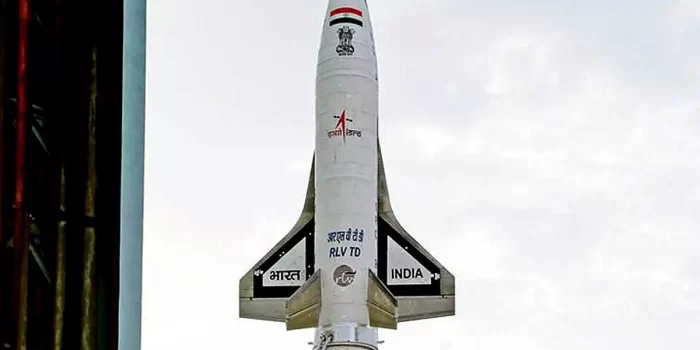India’s ambitious venture to create reusable launch vehicles (RLVs) reached a thrilling milestone today as India’s first reusable launch vehicle was tested successfully. The winged, SUV-sized rocket, nicknamed “Pushpak” or the “RLV LEX-02,” flawlessly executed a runway landing in Karnataka after an experimental flight.
ISRO chairman, S Somanath, hailed the mission’s “excellent and precise” results. The space agency proudly announced that ISRO had “nailed it again!” This simulated real-world test involved dropping the shuttle, aka Pushpak, from an Air Force helicopter and letting it autonomously land under conditions designed to mirror a real return from space. ISRO stated, “The winged vehicle… autonomously approached the runway along with cross-range corrections. It landed precisely on the runway and came to a halt using its brake parachute, landing gear brakes, and nose wheel steering system.”
This marks Pushpak’s third flight, further validating its robotic landing capabilities under increasingly complex scenarios. While it will likely be years before Pushpak is deployed operationally, each successful test brings India closer to its dream of affordable and sustainable space launches.

ISRO says the winged body and all flight systems used in RLV-LEX-01 were reused in the RLV-LEX-02 mission after due certification/clearances. Hence, this mission also demonstrates the reuse capability of flight hardware and flight systems. Based on the observations from RLV-LEX-01, the airframe structure and landing gear were strengthened to tolerate higher landing loads.
“The Pushpak launch vehicle is India’s bold attempt to make access to space most affordable,” Mr. Somanath explained. India could significantly reduce launch costs by recovering and reusing the rocket’s upper stage, which is home to costly electronics.
RLVs such as Pushpak also hold the potential to completely transform space operations. In order to lessen the rising issue of space trash, they may even rescue defunct satellites for repair or refuel them while they are in orbit. An example of India’s commitment to space innovation is the Pushpak project. Numerous scientists and engineers have worked on its development over the last ten years.
India’s reusable space shuttle represents the country’s ambitions for self-reliance in space technology and was inspired by the Pushpak Viman, a fabled winged chariot. With sustained progress and government backing, India hopes to become one of the countries leading the way in reusable launch technology.


